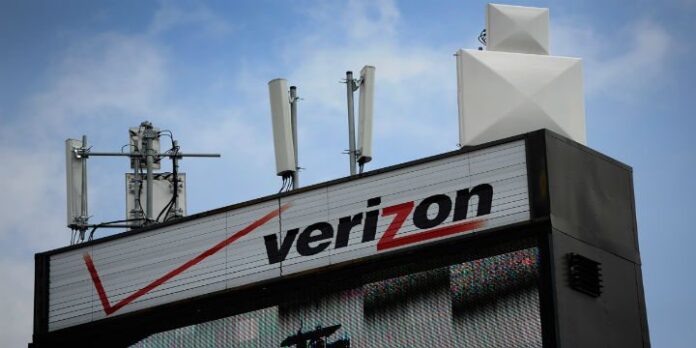Verizon video play expected by late summer; comfortable with current spectrum, technology options
Verizon Communications is set to unveil its oft-discussed “over-the-top” video service in a move expected to jolt the current video delivery model, but does not seem concerned about the impact such an offering could have on network quality.
During a conference call with investors this week, Verizon CFO Fran Shammo made numerous references to the company’s planned mobile-first video service that the carrier is planning to launch in late summer. The platform is set to take advantage of several technologies and acquisitions Verizon has conducted over the past several years.
Shammo said the initial launch will be somewhat limited, with plans to bolster the offering as it rolls out. The company has already signed content deals with a number of providers, including DreamWorks, AwesomenessTV, Vice Media and Scripps, with additional content available through its AOL acquisition that included The Huffington Post and TechCrunch.
“This is a lineup that is really around all live-type news clips and sports and events, so very different than what anyone else is bringing to the marketplace,” Shammo explained.
The video service also is expected to take advantage of its LTE Multicast technology, which Verizon has been trialing for a couple of years at major sporting events. The technology allows the one-way streaming of video content to multiple devices using a smaller section of wireless spectrum than current video streaming services.
Shammo said that all new smartphones sold beginning late last year are embedded with multicast support, except for Apple’s iPhone lineup.
Verizon Wireless initially showed off its Multicast service at the CES event in 2013, followed by its first live demonstration at the Super Bowl in 2014. That event relied on network equipment provided by Alcatel-Lucent, and according to a Verizon Wireless spokeswoman “went great.” The carrier at that time said it was working toward having the network enabled during the third quarter of this year.
The service runs off the LTE Broadcast standard – also known as evolved multimedia broadcast multicast service – that is designed to more efficiently transmit live video events to a large number of mobile devices. Instead of each individual device using a dedicated LTE channel to connect to video content, the LTE Broadcast offering would allow for a carrier to stream the content one-way to be received by enabled devices. This is expected to allow for more efficient use of spectrum. Qualcomm used a version of this with its short-lived MediaFLO service, which the company discontinued in late 2010.
Verizon’s video plans are also expected to counter a similar move from rival AT&T, which is in the process of acquiring satellite television provider DirecTV. Analysts have noted the pairing could provide the basis for a compelling video delivery system composed of AT&T’s wireless assets and DirecTV’s deep pool of content.
Spectrum plans
Verizon’s focus on network efficiencies are also evident in comments made by Shammo in how the carrier views its current spectrum portfolio and plans for the upcoming Federal Communications Commission 600 MHz incentive auction.
Shammo said the carrier did “not necessarily need low-band spectrum” that the planned auction will have on offer, but that the carrier was still looking at participation in the proceedings. The carrier already has 22 megahertz of spectrum nationwide in the 700 MHz band that is the basis for its LTE network, and has been slicing in higher frequencies to bolster capacity.
“Again, we’ll have to wait for the rules to come out but obviously we are continuing down the track that we set on coming out of the AWS-3 auction,” Shammo added. “So at that point we’ll have to wait to see what happens with the FCC.”
The recently concluded AWS-3 auction generated a record-setting $41.3 billion in net bids, with Verizon Wireless accounting for more than $10 billion of those proceeds. While questions still remain over bidding activity, many are leery of what sort of money will be required to pick up licenses in the 600 MHz band.
Shammo explained that 40% of Verizon’s current spectrum portfolio is being used to support LTE services, which are carrying 87% of the carrier’s total data traffic. Those current spectrum assets include the 700 MHz and 1.7/2.1 GHz bands, with Verizon also beginning to add spectrum in the 1.9 GHz band that has supported legacy CDMA-based 3G services. Verizon also picked up additional spectrum in the 1.7/2.1 GHz band in Auction 97, which the carrier said it plans to tap over the next two-and-a-half years.
“We have plenty of capacity to deal with the ramping of what we believe will happen with our OTT product and the continued pursuit of volume in the industry,” Shammo said.
Shammo also touched on potential efficiencies gained from the carrier’s move toward deploying network virtualization technologies like software-defined networking. The carrier mentioned the software scalability inherent in its LTE network, as well as new technologies like C-RAN and more virtualization expected from the move to “5G.”
“So there’s a lot happening in this industry from a technology standpoint, so spectrum’s important, it will always be important, but it’s not the only tool we have in our toolbox,” Shammo added.
Bored? Why not follow me on Twitter

